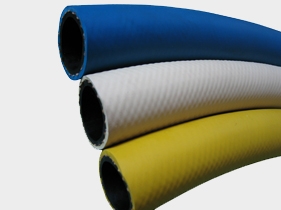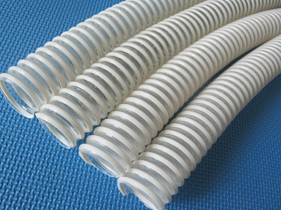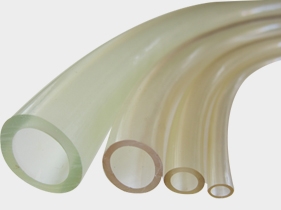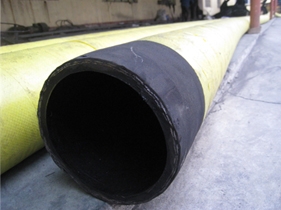
Zhengzhou Peristaltic pump pipe The break of the sandblasting hose usually refers to the appearance and change of the crack of the sandblasting hose. The sandblasting hose has one or more cracks, but the cracks are neat. Another is that the internal bending cracks at the crack of the sandblasting hose are neat. The causes of different errors are different, and the treatment methods are also different. Therefore, in the process of using or protecting the sandblasting hose, the sandblasting hose should not be subject to changing torque. When installing the sandblasting hose, try to keep the axis of the two joints on the same plane to avoid twisting the sandblasting hose in use. Therefore, be careful with the application, and try not to make the sandblasting hose change excessively to avoid consumption. Sand blasting hose plays a very important role in the industry. Its inner rubber layer is added with carbon black, which can effectively eliminate static electricity and directly contact with compressed air and abrasives. The requirement for wear resistance is quite high. Once worn through, the reinforcement layer will be exposed, and the sand blasting hose will burst. The reinforcing layer of sandblasting hose is a pressure resistant layer, so production Peristaltic pump pipe The material and layout of the reinforcement layer directly determine the pressure rating of the sandblasting hose. There are two common enhancement layers: cloth clip enhancement layer and surround enhancement layer. The sand blasting hose with an inner diameter of 50mm or more is mostly used in the construction occasions where the sand blasting pipe needs to be extended to reduce the pressure loss in the sand blasting hose and ensure the normal operation of shot blasting.

Zhengzhou Peristaltic pump pipe It is one of the most common rubber products in life, used to transport various gases and liquids. Natural rubber, synthetic rubber and reclaimed rubber in rubber products can be used for the consumption of rubber sand blasting pipes. When reclaimed rubber is used to consume odorless rubber sand blasting pipe, care must be taken in selecting reclaimed rubber and formula design to meet the performance requirements of odorless rubber sand blasting pipe. When using recycled rubber to consume odorless rubber sand blasting hose, what problems should we pay attention to? The selection of reclaimed rubber for odorless rubber sandblasting hose is the basis for determining the quality of rubber, whether it is environmental protection rubber products or various odorless rubber products. When using reclaimed rubber to consume odorless hose, choosing odorless reclaimed rubber is the top priority. Application of odorless reclaimed latex, odorless reclaimed tire rubber, odorless reclaimed nitrile rubber and odorless reclaimed ethylene propylene rubber in reclaimed rubber products. The odorless butyl reclaimed rubber can be used for the consumption of odorless rubber sandblasting pipes. In addition, odorless hb isoprene reclaimed rubber can also be used for consumption of odorless rubber sandblasting pipes. In actual consumption, the raw materials of odorless isoprene reclaimed rubber (PP reclaimed rubber) are isoprene unvulcanized composite rubber and isoprene bottle stopper. They have strong viscosity, aging resistance and temperature resistance, and are ideal for odorless hose consumption to ensure quality and reduce costs. Pay attention to the vulcanization of odorless rubber sand blasting pipe. as everyone knows, Peristaltic pump pipe Price The design of vulcanization system of reclaimed rubber products directly affects the quality of rubber products, and the odorless rubber sand blasting pipe of reclaimed rubber is no exception. When using reclaimed rubber to consume odorless rubber sand blasting pipe products, vulcanizing agent, accelerator and other additives must be combined with odorless additives such as accelerator STT and accelerator D; When vulcanizing the rubber of odorless rubber sand blasting pipe, it is better to vulcanize at low temperature for a long time, which will cause full reaction to the rubber.

Zhengzhou Peristaltic pump pipe Also called rubber hose for sand blasting. It is suitable for air pressure sand blasting of metal surface for rust removal, hemp removal, and sand blasting rubber hose for wet sand blasting and dry sand blasting in engineering construction. It is suitable for air pressure sand blasting of metal surface for rust removal, hemp removal, and sand blasting rubber hose for wet sand blasting and dry sand blasting in engineering construction. The common application fields are shipbuilding, machining, spraying industry, etc. Appearance of abrasion resistant sand blasting hose: 1. Light abrasion resistant sand blasting hose consists of black, yellowish or transparent abrasion resistant rubber inner layer, central fabric or cord reinforcement layer, medium rubber layer and outer rubber layer; 2. Heavy abrasion resistant hose consists of black, yellowish or transparent abrasion resistant rubber inner layer, cloth clip or cord reinforcement layer, steel wire framework reinforcement layer, medium rubber layer Composition of outer rubber layer 3. The steel wire braided wear-resistant sandblasting hose is composed of black, yellowish or transparent wear-resistant rubber inner layer, single-layer or multi-layer steel wire braided reinforcement layer, medium rubber layer and outer rubber layer. Purpose Abrasion resistant sand blasting hose is a kind of material conveying pipe, which is mainly used for conveying solids containing particles such as particles, gravel, cement, quicksand, mud, gypsum, etc. It is suitable for various tunnel projects, tunnels, caverns and other engineering operations. The general working pressure is less than 12 bar, and the higher bursting pressure can reach 36 bar. Sometimes the vacuum rich negative pressure parameter is 0.8 bar 0.9 bar. Peristaltic pump pipe Price Hydraulic requirements 1. The maximum working pressure of wear-resistant sand blasting hose is 0.63MPa. 2. The hose shall be free from water seepage, local bulge, expansion and other abnormalities when conducting hydraulic test under twice the working pressure. Keep the pressure of anti-static hose for 1min, and the length change shall not exceed ± 0.8%, the outer diameter change shall not exceed ± 10%, and the torsion per meter shall not exceed 60 º. 3. The bursting pressure of the hose shall not be less than 4 times of the working pressure.

In the shipbuilding industry, radio industry, electrical industry, telecommunications industry, instrument industry, aviation industry, medical industry, etc., we often see acid and alkali resistant hose, then what is Zhengzhou Peristaltic pump pipe What about? If you want to know more, please read down! Acid and alkali resistant silicone hose is a kind of pipe specially used for power equipment, which uses acid and alkali resistant silica gel as the main raw material and tightly wraps the pipe wall with electrical grade polyethylene spiral wire. Due to the chemical inertia of acid and alkali resistant silica gel, this kind of pipe has good acid and alkali resistance performance and electrical performance, and is commonly used in the production of wires, cables and lead wires in extreme acid and alkali environments. Also called: acid and alkali resistant silicone rubber hose, acid and alkali resistant silicone rubber hose, acid and alkali resistant silicone rubber hose, acid and alkali resistant silicone rubber hose, acid and alkali resistant silicone rubber hose. Features: 1. High temperature resistance (250-300 ℃) and low temperature resistance (- 40-60 ℃); 2. Good acid and alkali resistance. Physiologically stable, able to withstand repeated harsh and disinfection conditions, resistant to ozone aging, light aging, weather aging and ultraviolet radiation. 3. Small resilience and permanent deformation (no more than 50% at 200 ℃ for 48 hours), breakdown voltage (20-25KV/mm), ozone resistance and UV resistance. Peristaltic pump pipe Price Radiation resistance and other characteristics, 4. Good electrical performance, small change when exposed to moisture, water or temperature rise, even if the silica generated by short circuit combustion is still an insulator, which ensures that electrical equipment continues to work, so it is most suitable for making wires, cables and lead wires.






